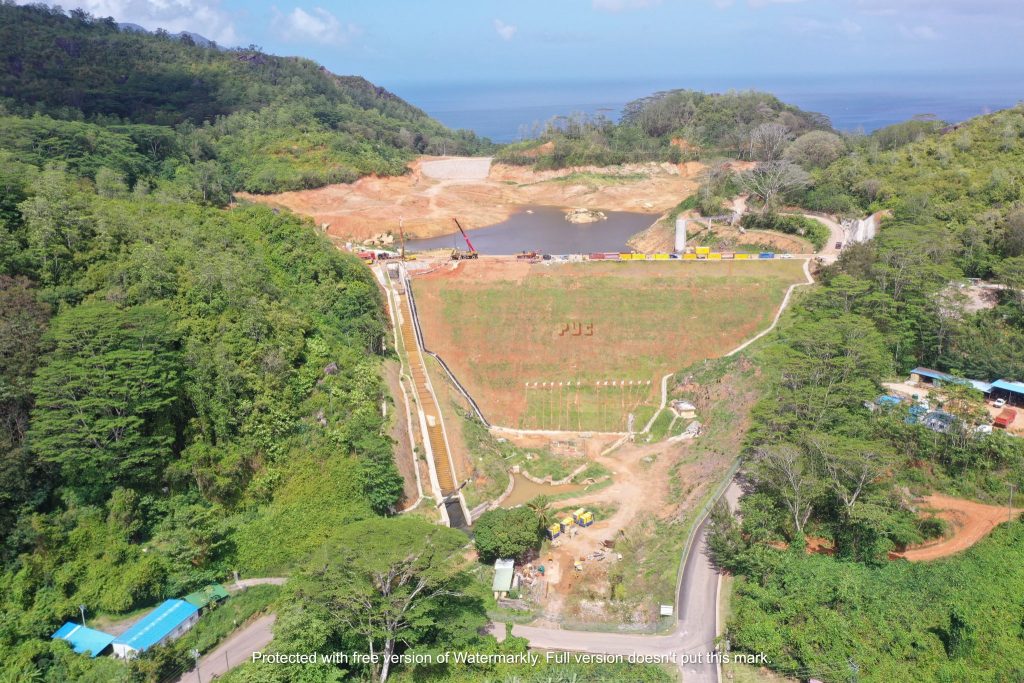A case study of resilience solutions in action, from The International Coalition for Sustainable Infrastructure (ICSI)
As part of the Race to Resilience campaign, ICSI is compiling case studies of best practice climate-resilient infrastructure in an effort to showcase human-centric and sustainable infrastructure projects around the world.
La Gogue Dam in Seychelles is the largest of two in the country and is the main water store for the island which houses the majority of the country’s population The dam mis being raised by 6m, determined as the maximum feasible height. This is expected to have a major impact on the country’s resilience to climate change as it addresses water supply constraints to the central and northern regions of Mahé during extended dry periods. The project will deliver environmental, social and economic benefits.
Environmental:
The increased storage capacity will improve water supply services during dry periods and will also lead to a reduction in energy costs from the operation of desalination plants (though these will still act as back-up). The increased water production capacity will help to reduce the dependency of households on bottled water during dry periods. The establishment of a catchment and buffer zone (no-development zone) around the dam will also help to ensure the dam’s security from contamination.
Social:
This project has helped to create job opportunities during the implementation stage, and will continue to do so through the operation and maintenance of the dam. Gender equality has been prioritised throughout the consultation process by targeting women engineers for on-job training and offering project management and dam construction training for both men and women.
The project will also lead to improvements in sanitation facilities in schools (in addition to water tanks) and a reduced need for additional efforts in getting water for households.
Economic:
The increased water supply of the dam will support growth in the tourism industry, which is a main contributor to the country’s economy, as well as other industries reliant on water.
This project also addresses carbon mitigation. Construction materials were sourced from borrow areas identified in close proximity to the project site, reducing the need for material transportation. In addition, areas cleared of vegetation were restricted to housing permanent structures and borrow areas to limit the impacts of the carbon absorption by vegetation. The borrow areas and other areas left bare from temporary works are being restored with vegetation.
Lastly, as water bodies act as carbon sinks, the dam will have an increased absorption capacity due to increased storage. The added storage will also decrease the amount of energy used for the operation of desalination plants during dry periods which can reach up to 12KWH/m³ per month. (Note that Seychelles depends on mainly fossil fuels for energy production.)
Learn more:

